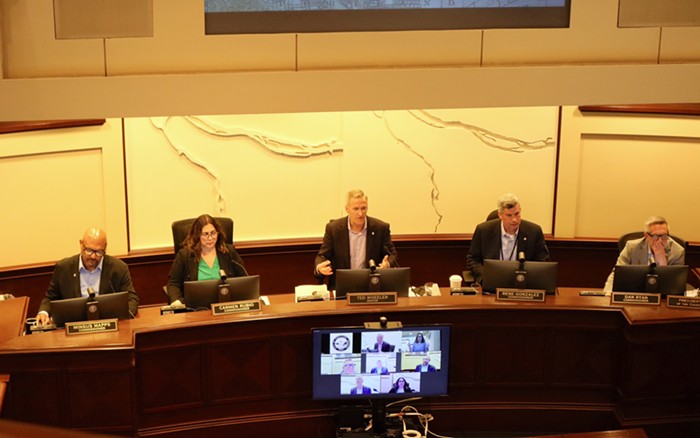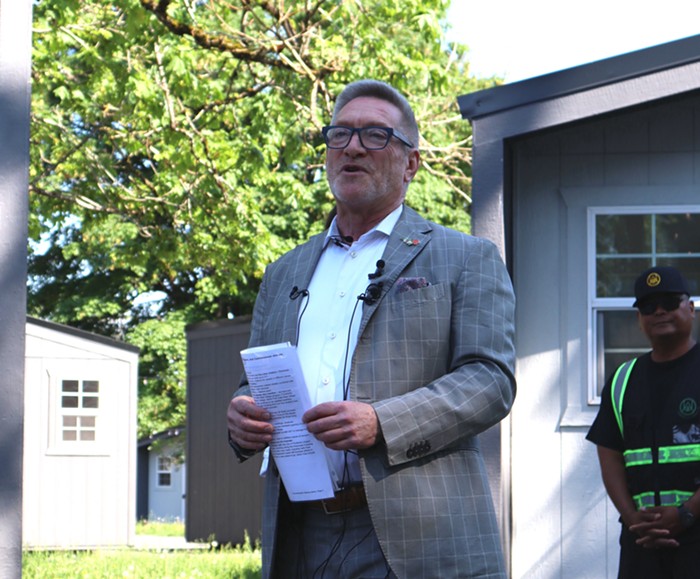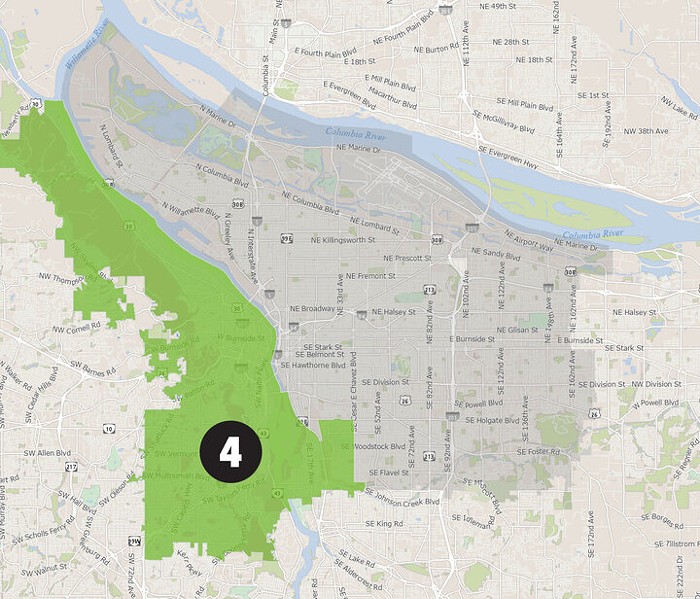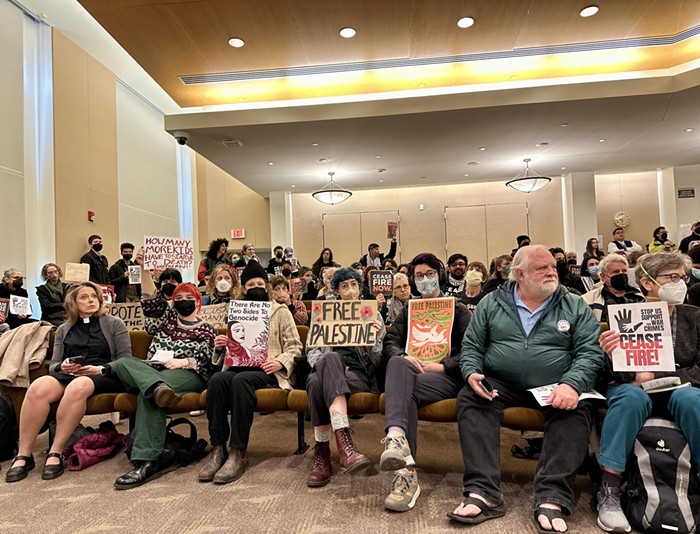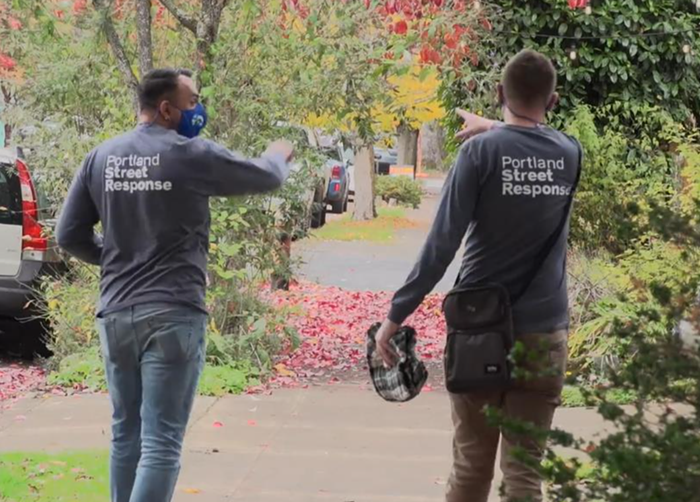So... Governor John Kitzhaber was at Portland City Club this afternoon for a big address his people were billing "a call to action" for Oregonians. Life happens and I didn't get to attend in person, I confess. But, then, that's probably one of the reasons why his staff also sends out copies of his remarks.
Reading 'em over, the governor played to the themes he staked during the campaign: the economy, education, and, owing to his medical pedigree, health care. Among the biggest highlights? A semi-promise that work on the Columbia River Crossing could start as soon as 2013. He also offered a broad plan for reordering how the state funds education, and also for how the state should pay for medical services.
Here they are, neatly summed up, in the governor's own words as needed.
1. Yes, he really said work on the CRC might get underway by 2013.
Kitzhaber revealed that on Sunday, he and his counterpart in Washington met with U.S. Transportation Secretary Ray LaHood, with the idea that they all want the Interstate 5 bridge linking the states moving ahead on the fast track, despite years of back-and-forth and controversy. One question is whether we've really seen the last of that kind of drama—and whether the feds can really come up with the money.
"I’m happy to report we have an opportunity to get all project approvals this year, complete engineering in 2012 and break ground in 2013... I acknowledge that this project is not without controversy but I am confident we can and will build a bridge we can all be proud of."
2. The state's separate pots of education funding should be merged into one.
That would mean no more silo for K-12 money, next to another silo for the community colleges, next to yet another for the state universities, among others. The governor instead is demanding an "0-20" budget that also wraps in pre-kindergarten funding and priorities that currently are split across even more agencies.
The thinking, he says, is to shift the formula from a reliance on enrollment numbers to one that focuses on results. But this plan, too, faces headwinds. The universities are restive about relying on the state, and neither faction might be keen on sharing what traditionally they haven't had to share.
Today, we spend over a billion dollars each biennium on services for children ages 0 to 5 through a wide range of public, private and non-profit programs and organizations. But we are unable to track a child through these programs; we are unable to track results; these programs and services do not work in concert; and many are disconnected from the K-12 system. In short, our current system is neither integrated nor accountable.
3. It makes more sense to pay $500 for an air conditioner than $50,000 for heart surgery.
Kitzhaber wants to control rising health care costs by making smarter decisions with the state spends, not just whacking away at it with a blunt meat cleaver.
He came armed with statistics that he says show 70 percent of state spending goes to 10 percent of the state's most chronically ill residents. So instead of waiting until these people end up in emergency rooms or on ambulances, he says, why not spend money on them before they're urgently sick. And that way, we can free up money for other needs.
It's an idea that needs to be fleshed out, but it's clearly got a lot of potential. Kitz actually explains it pretty nicely.
Let me give you an example. Let’s suppose there is a frail 92 year old woman with well managed, stable congestive heart failure living alone in a small apartment without air conditioning somewhere in SE Portland. During a heat wave the temperature in her apartment reaches 102 degrees. This increase in temperature adds enough additional stain on her heart to put her in active congestive heart failure.Under our current system, nobody is likely to know about this woman until an ambulance delivers her to the emergency room at Legacy Emanuel Hospital. Under a more rational system, however, she would have a case manager—a home health worker—who would be monitoring her condition and checking in with her on regular basis.
Under our current system, Medicare will pay for the ambulance as well as the $50,000 cost of her hospitalization but not for a $500 window air conditioner which all she needs to stay at home and out of the acute care medical system in the first place. This makes little sense either economically or from the standpoint of improving the health of Oregonians.
What I am putting before the legislature is a proposal to address this problem by fundamentally changing our heath care delivery system to improve the health of the population, at a lower cost while improving the patient experience in terms of clinical outcomes, patient safety and patient satisfaction.
Unlike the short-sighted decisions of other states that are considering dropping Medicaid recipients from state coverage, we’re taking a different approach—because there’s nothing to gain and a lot to lose by stripping people of coverage, only to have them show up in emergency rooms—where we end up treating their stroke in the hospital rather than managing their high blood pressure in the community.
